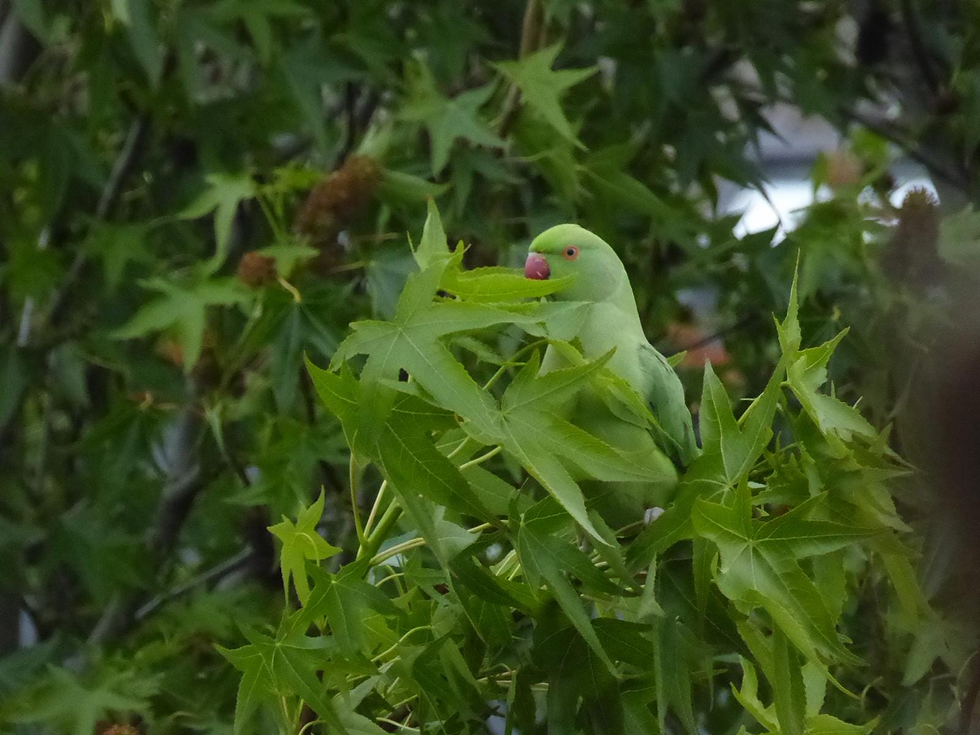Did Jimi Hendrix kick off London's booming parakeet population?
- Rachel Baxter

- Aug 4
- 4 min read
And do they pose a problem?
The high-pitched squawk of a parakeet is a common sound in many London parks. In fact, there are thought to be around 12,000 breeding pairs in the UK, with sightings stretching from London to Wales to southern Scotland.
But where did they come from?
People often say the birds — know formally as ring-necked parakeets or Psittacula krameri — arrived in the wilds of London after legendary singer-songwriter Jimi Hendrix released a pair in Carnaby Street in the 1960s.
According to another story, they escaped from the West London film set of 1951 adventure movie The African Queen.
However, research has shown the distribution of the birds does not correlate with these alleged London release sites.

A 2019 study from researchers at Queen Mary University of London used geographic profiling — a technique originally developed to prioritise criminal suspects — to analyse the spatial patterns and distribution of the birds since the 1960s.
“We show that, despite the undoubted appeal of the different hypotheses concerning their origin, spatial analysis provides no support for any of them, leading us to conclude that the birds' establishment in Britain is more likely to be a consequence of repeated releases and introductions,” the authors write in the Journal of Zoology.
Ring-necked parakeets originate in Africa and southern Asia, although most UK-based parakeets are a subspecies from India. They made their way to Europe via the wildlife trade, and have been kept in cages and aviaries in the UK since the mid-1800s.
As the researchers of the 2019 study note, they most likely entered the wild through multiple escapes and releases over the years. Feral parakeets have been recorded in London for over a century — they were spotted in Brixton and Dulwich as early as the 1890s.
The ring-necked parakeet today holds the title of the UK’s only naturalised parrot, according to the RSPB. They are also known as hemerophiles, meaning they adapt well to city life and profit from the changes humans make to their environment. For example, they are frequent visitors to bird-feeders in colder months.

Parrot fever
The years of 1929 and 1930 saw an outbreak of a disease called psittacosis or “parrot fever”— a flu-like illness caused by the bacterium Chlamydia psittaci. The Great Parrot Fever Pandemic took hold in a number of countries and caused around 100 deaths worldwide.
It’s thought to have originated in South America, and spread quickly with the global trade in exotic birds. Panicked by news of this pandemic, it’s likely that many parakeet owners in England released their feathered companions into the wild to avoid contracting the disease.
Green aliens
While parakeets are a cute and vibrant addition to UK urban green spaces, they are still an invasive species. Like many alien species, they compete with local wildlife for food, space and shelter, meaning they can have negative impacts on native species like nuthatches and woodpeckers.
Much like green and spotted woodpeckers, they like to nest in cosy tree holes, meaning there are fewer nesting spots to go around. Parakeets are also larger and more aggressive than many UK bird species, making them hard to contend with.

If you ever encounter a posse of parakeets settling down for the night in a nearby tree, the first thing you’ll notice is how noisy they are. Their collective nouns of “pandemonium” and “chatter” aptly sum up the cacophony of squawks they emit. While entertaining, this also raises questions about how the noise created by these invasive birds might disrupt local wildlife.
While many British birds have seen declines in recent years, parakeet populations seem to be thriving.
The UK breeding bird survey, published in the journal Global Ecology and Macrobiology in December 2024, notes that ring-necked parakeets saw the third largest population increase of any bird in the UK between 1995 and 2022. The little egret (Egretta garzetta) and red kite (Milvus milvus) placed first and second, respectively.
To cull or not to cull?
More research is needed to examine the extent to which parakeets are affecting British wildlife and whether anything needs to be done to control them.
The Department for Environment, Food and Rural Affairs (DEFRA) has previously said there is no plan to cull ring-necked parakeets in the UK.
Any proposed future cull would likely be controversial. A review published in Diversity last month looked at human attitudes to parakeets in London and Sheffield. The authors — from Sheffield Hallam University — found that people often have positive attitudes towards feral parakeets as they’re both attractive and interesting.
However, people in London, where the birds are much more established and numerous, were more likely to view parakeets as a nuisance or worry about their impacts on the local environment. When thinking about possible control measures, “issues of acceptability, ethics, economics, and effectiveness were raised in both regions,” the authors write.
For now, it seems that despite being an invasive species, ring-necked parakeets are likely not causing enough damage to warrant control measures. But more research is needed to confirm their impact on native wildlife.
Their relationship to humans is also complex. Many people enjoy their presence in the UK and they have been well established in parts of the country for a very long time.
“These feral populations are primarily urban birds, and previous research has indicated that urban communities often welcome attractive, entertaining, spectacular exotic species,” note the review authors. “Furthermore, they dislike culling.”




Comments